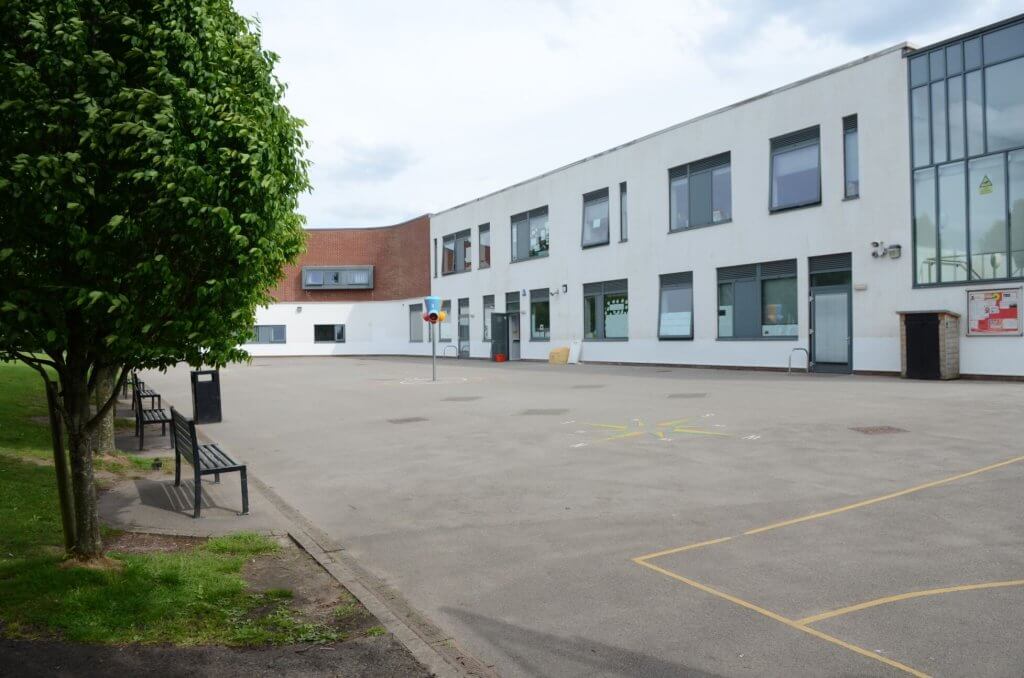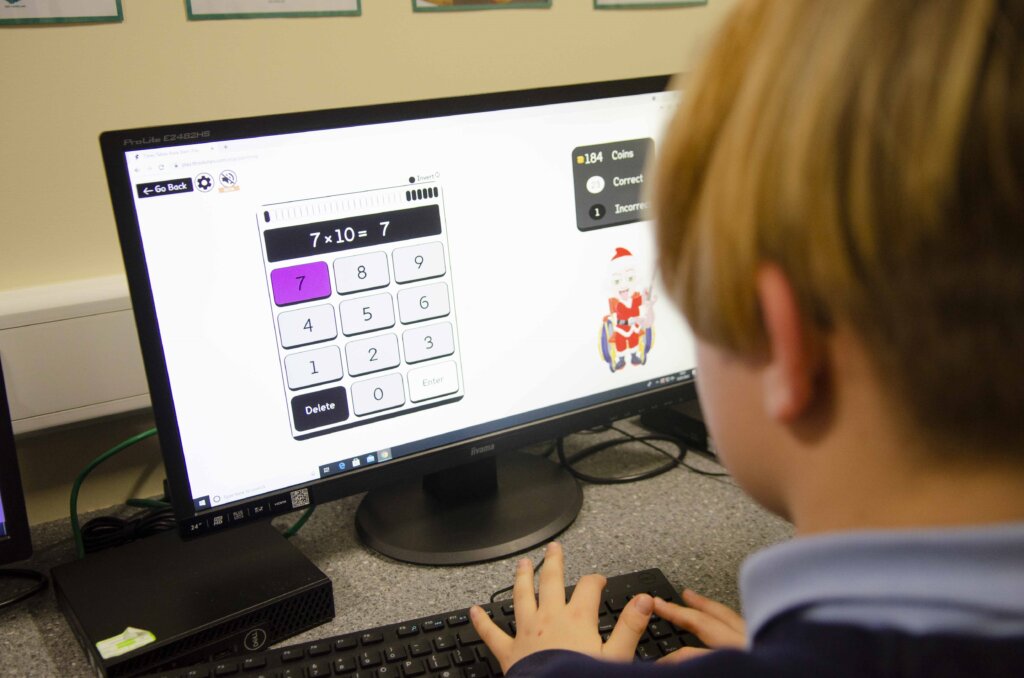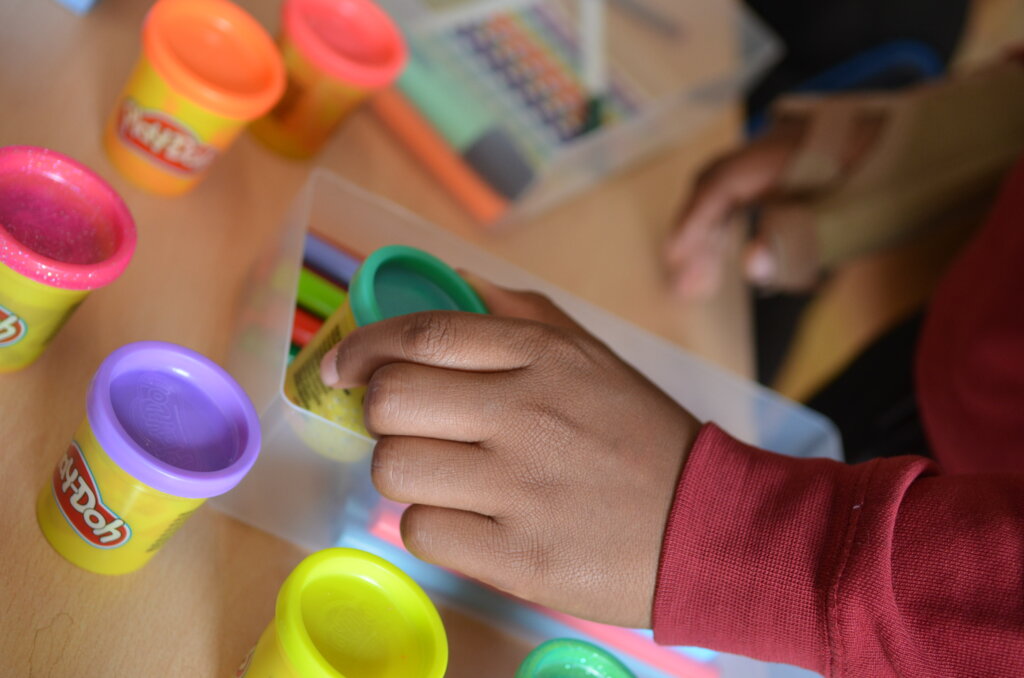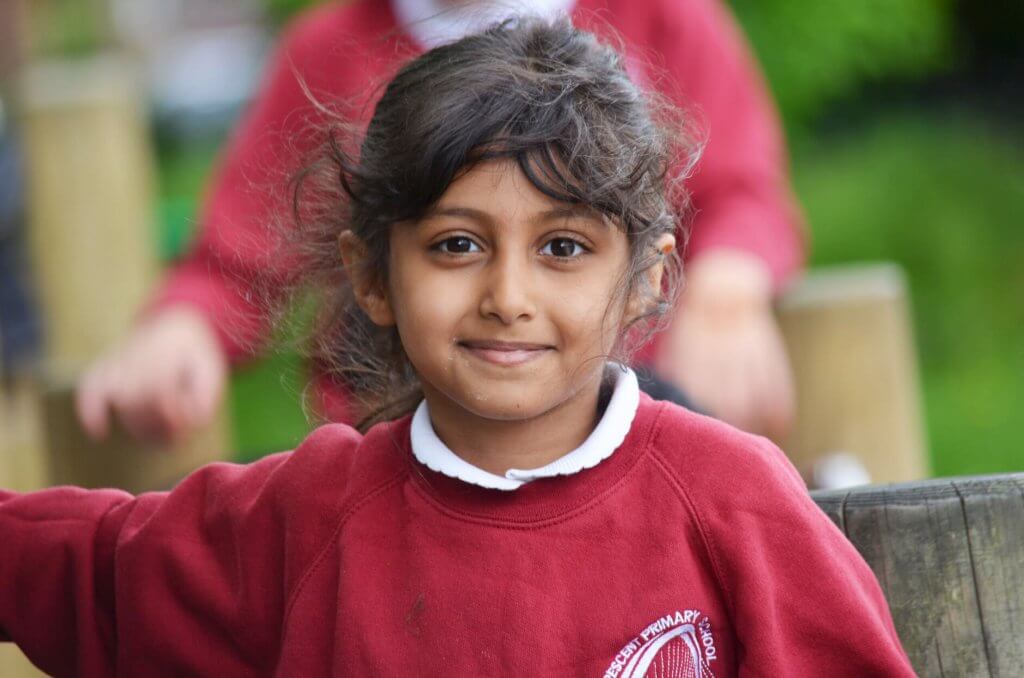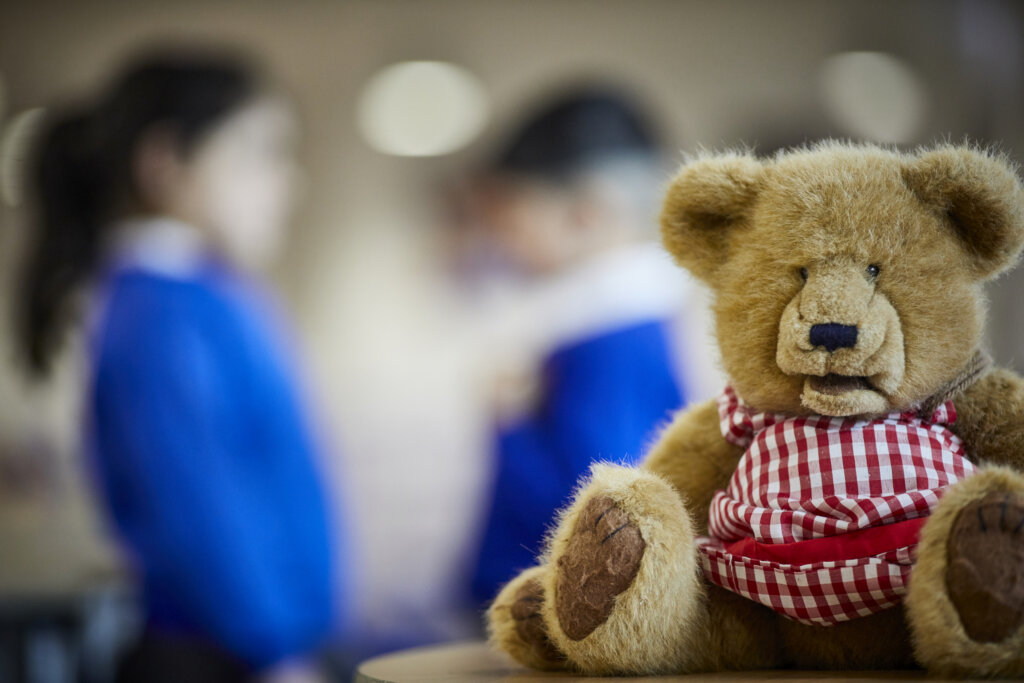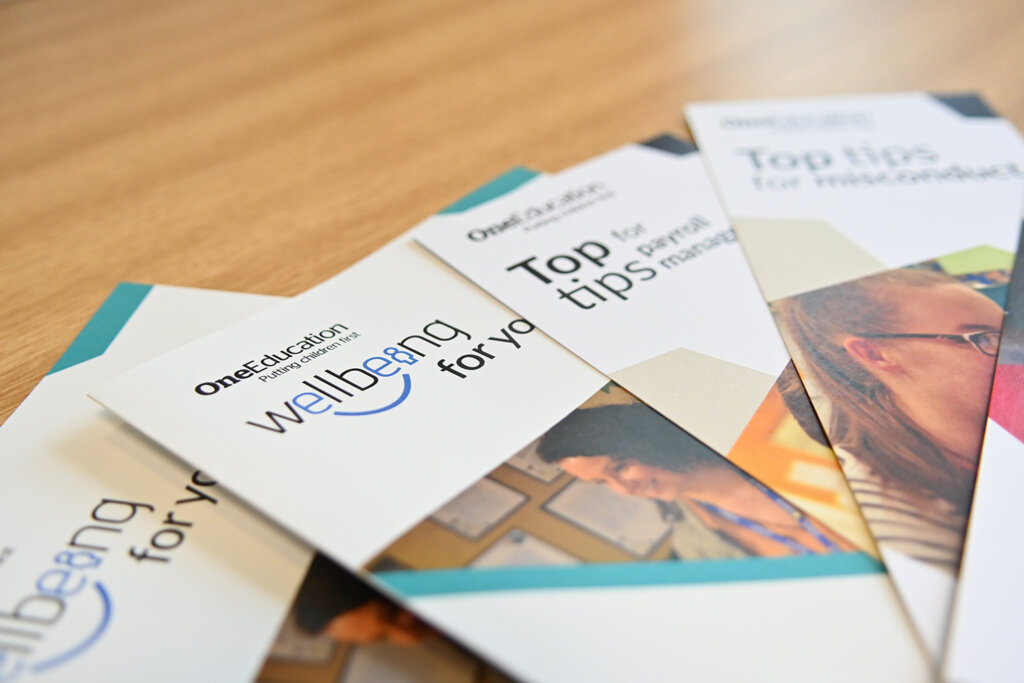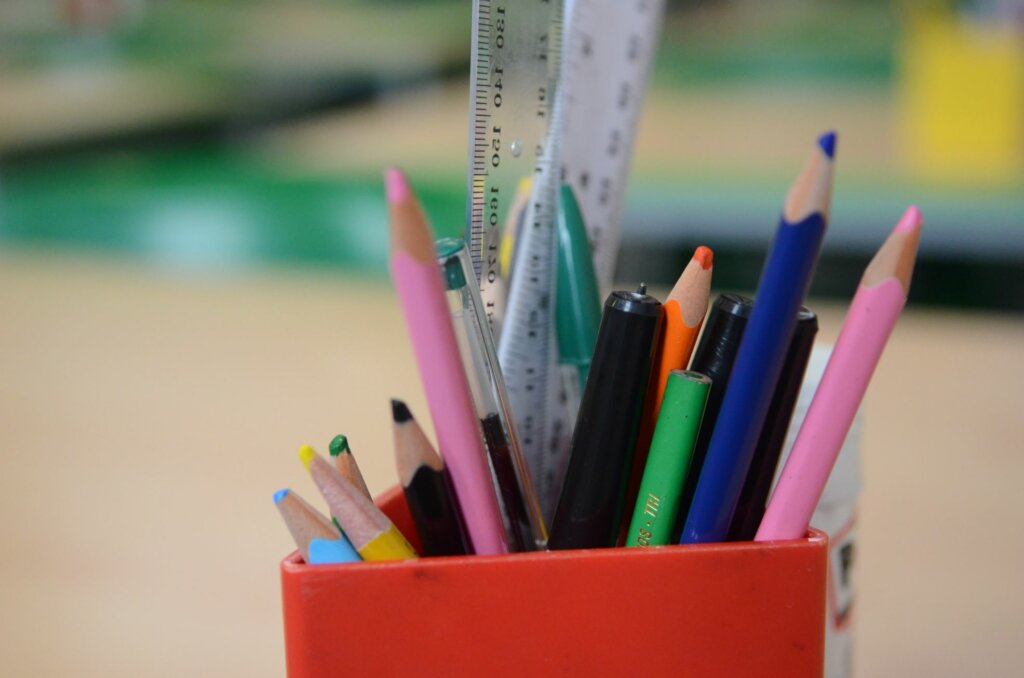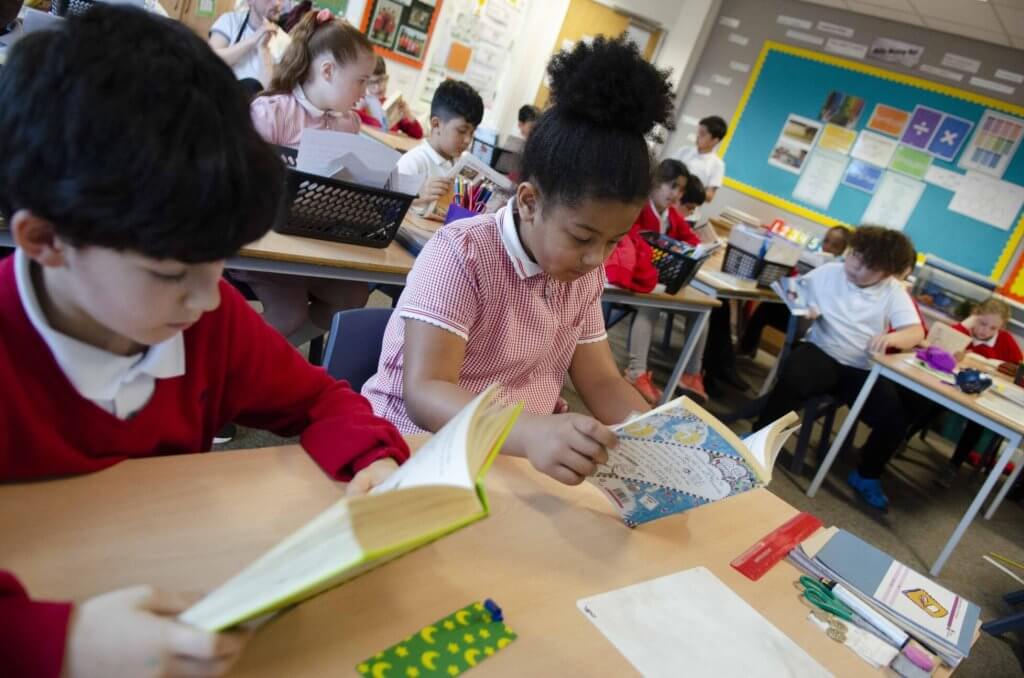Part two of our blog series, focusing on the One Education Reading Gems. In part two, we explore the structure for teaching reading effectively in primary school.
This blog follows on from our previous blog, Reading Gems: Part One, which we would suggest that you read first. Giving sufficient time to the teaching of reading is essential, where teachers can share high quality texts with pupils whilst developing a love of reading, fluency, skills and strategies to become competent, lifelong readers. The sessions can either be in small groups or as a whole class. Whatever the approach, a similar structure should be followed to ensure children have opportunities to read or listen to a teacher read, explore strategies to approach unfamiliar vocabulary, and to see modelled how we can comprehend and discuss texts in a variety of ways.
The Structure for Teaching Reading Effectively
The team at One Education has seen whole class, small group, and a combination work successfully for structuring the way in which you teach reading. To us, it is more important about how effectively reading is taught and how the children respond to group or whole class discussions. You may wish to read the rest of this blog whilst looking at an example Reading Gems plan so that you can see how it relates to our suggested structure. Our plan is detailed but it is designed to help you follow our structure, we would not expect a usual unit plan to have so much detail. Please download our resources at the end of this blog to access an example reading plan that follows our structure.
| Day One | Day Two | Day Three | Day Four | Day Five |
| Get Ready | The Wonder of Words | Exploring the Text | Becoming Skilled Readers | Book Club |
A note of caution: We have seen small group reading work very well, but please do bear in mind the workload of planning five different guided reading lessons each week can be onerous. It may be that the quality of lessons is better if adults are only planning for one text per week. Adaptive teaching can work well here, and some children may also need a pre-teach or a post-teach session to ensure that they are able to prevent against gaps in reading skills. Other children may need additional guided reading sessions in addition to their main class sessions, to help close any gaps already identified. As mentioned, to us it is more important that reading is taught effectively and in a way that suits all children within a cohort.
Session 1: Get Ready

The first day is all about getting ready, following the structure below, with an emphasis on discussion we can engage the reader and ensure they are enthused about reading the text whilst supporting their background knowledge and understanding.
Hook
A great way to start your reading sequence during day one is to hook in and excite children about the new text. Making the experience real will really engage them and promote a love of reading. It is also a brilliant way to encourage them to respond to the theme of the text and perhaps make some predictions as to the content.
For example, if teaching Anya’s Quest in Year 4, you could display an image or video of a snowy landscape, discussing where it might be and what you might need if you were there. After children’s initial ideas, you could introduce props, such as a backpack, travel essentials and a golden compass. What kind of journey might someone take with these items? Discuss who the person might be, where they might be going, and why, linking to prior reading and knowledge.

Text Introduction
After hooking the children in to the topic or theme of the text, it’s important to introduce the text for the first time. You could display and read the title together, discussing key words and what children think the title means, making links to prior reading, before turning to the background knowledge needed for reading the text.
Background Knowledge and Experience
As mentioned in Part One of this blog, the DfE and Ofsted are rightly focusing on what children are learning and how well it is remembered. Schools are designing curricula that suit their pupils’ needs in order to prepare them for the world in which they live. The accumulation of background knowledge is important, as research shows that our understanding of what we read depends greatly on what we already know.
In short, we need to build children’s background knowledge. But how can we do this? It is beneficial, where possible, to link reading lessons to current learning in other subjects, so that the children can develop their understanding and become familiar with relevant events, people, objects, concepts and subject-specific vocabulary.
The EEF state in their ‘Improving Literacy KS2’ document: “To activate prior knowledge, pupils think about what they already know about a topic, from reading or other experiences, and try to make links. This helps pupils to infer and elaborate, fill in missing or incomplete information and use existing mental structures to support recall.”
Within Reading Gems session 1, it’s important to support children’s activation and development of background knowledge, through carefully chosen activities and discussion points. When teaching Anya’s Quest, you could explore the idea of going on an adventure or quest, as well as introducing some of the points of Hindu culture and mythology the text draws upon, making links to the RE curriculum.
However, we also need to think carefully about how we can support background knowledge through the order of texts we read with children. One of the ways we can do this is to link reading texts to wider curriculum learning. For example: During a WWII history lesson, children might be learning about the outbreak of war. They then might be exposed to a newspaper article about Neville Chamberlain’s declaration of war. The children’s background knowledge of this event in history will enable them to make links, aiding their reading and understanding of the text, when reading Letters from the Lighthouse by Emma Carroll.
Another way to develop background knowledge would be to support new, unfamiliar concepts found in fiction with a non-fiction text to improve their understanding. For example: In the text Wonder by R.J. Palacio, the main character has a rare genetic condition called Treacher Collins Syndrome. Whilst reading Chapter One, you might decide that children might benefit from a better understanding of what this syndrome is and what the symptoms are. Providing them with a short, simple medical article explaining this and discussing it in relation to the text, would help them to improve their knowledge before continuing to read the fiction text.
Prediction of the text
Once you have hooked the children in and built up their background knowledge, you may want to develop their engagement with the text. This may be through prediction questions and understanding word meaning.
You may start by asking:
- From the blurb, what do you think the book will be about? Why? As an open-ended response question, it allows children to give their own opinion and try to link it to something that they already know and understand. To be able to infer well, we need background knowledge and some understanding of the topic we are reading about.
- Have you read any books that you think are similar? This draws the children to make links with what they have already read and gives children the opportunity to draw upon prior knowledge whilst reading to make connections.
Discussion could then turn to text-specific questions, such as:
- What do we already know about Anya?
- What might be special about her?
- What do we think might happen on Anya’s Quest?
- What challenges might Anya face?
Thinking Question
You may then want to introduce a question that will explore themes throughout the text and give the children something to think about before they start reading the text. For example, if we take the prologue for Anya’s Quest, then a great thinking question may be Why is it important to face challenges, even when they seem scary or difficult? Children could start to discuss this from the title of the book, the front cover etc and then the thinking question would be revisited as we go through the extract or book, allowing children to develop their thoughts and ideas as they explore the text.
Adaptive Teaching
After the first session, we need to consider those children who may need a little longer to develop background knowledge, or those who may need some support to understand key vocabulary. These children may benefit from a pre-teach, prior to Session 2, where vocabulary and the text extract are explored in a small group at the children’s pace. Equally, we also need to consider whether there are children in our classes who would benefit from additional challenge between sessions. Children could research the key concepts in greater detail or build a book web of their own links to the text, enabling them to bring additional information and points of view to discussion later in the week.
Session 2: The Wonder of Words

Vocabulary Focus (including decoding if needed)
Rather than asking children to find words that they don’t understand, which you can do as you read, for Session 2 it is best to identify and discuss the words with which children may struggle before encountering them in the text.
This is a good opportunity to check children’s understanding of specific words in addition to introducing new vocabulary. For younger children, this is also the opportunity to discuss strategies of how to read words that they are not familiar with.
Getting the balance right between independently finding out word meanings and directed teaching will depend on the vocabulary being taught. For instance, is it likely to be used regularly or in future learning? (Tier 1 or 2) If so, then it may be worth spending time on the word, or if it is a lesser used word (Tier 3) it may be worth directly telling children what the word means. Encouraging children to work out what specific words mean without teacher input is important, but if children are to learn precisely then in some cases, they may need to be specifically taught the meaning of a word.
There are many ways in which we can help children to understand the words that they will come across in the text, however it is key that they are all taught in context. Presenting children with the word, but also the word within the sentence it appears in the text, means that children build a better understanding of that vocabulary term, that becomes more transferable than a dictionary definition. Images and clips can also help when introducing vocabulary, supporting the children to ‘see’ the word in action.
| soar | Here the birds soar through frozen skies. |
Once a word or phrase has been introduced and explored in context, you can then identify one or two to unpick in further depth. For example, you may encourage children to choose one of the words you have given them and complete a word map or a vocabulary tree such as the ones below. Alternatively, you may use a word wheel like this one.


First Read
Now it is time to read the text. On occasion, you may want children to read at their own pace and, if an adult is available, they may hear a child read part of the text whilst the other children continue to read independently. At other times, you may want to focus on modelling fluency and modelling your thought process whilst you read for understanding. Alternatively, when exposing children to a more challenging text then you may want to read the text to the class initially so that children’s cognitive load is reduced.
Whilst children are reading the book, or listening to it being read, they should write down any questions they may have. This helps children to become aware of questions readers pose to themselves when thinking about the meaning – something which competent readers do automatically. You will also need to model this; pausing to ask questions can help a child become a competent reader. When sharing the book, please remember that this is also about developing a love of reading and a passion for books. The more enthusiastic you can be about a text, the more enthusiastic (usually) the children are! However, there is never any harm in changing the text if you and the majority of the class are not enjoying it, as much as you thought you might do. Texts you have used successfully with some cohorts may not have the same impact with others.
Discussion
This session should always ensure that there is time for children to discuss their own questions as well as finding enjoyment whilst discussing the book and having ‘book blether.’ Following the first read you may also want to revisit their predictions and the thinking question, allowing children time to explore this will help them to understand that their thoughts may change, be challenged, or be extended as they learn more.
Adaptive Teaching
After the second session, as with the first, we need to consider those children who may need a little longer to understand key vocabulary. These children may benefit from a post-teach, where the vocabulary and the text extract are explored again to in a small group at the children’s pace. Where children have grasped the new vocabulary confidently, challenging them to use this vocabulary in their own speech and writing will help to embed and extend their understanding.
Section 3: Exploring the Text

Re-Read for Fluency
Each session should start with a short recap of the two previous sessions to reactivate pupils’ prior learning and make links. The session may start by asking the children to explore the vocabulary identified, or discuss the questions that the children have about the text, keeping a love of reading at the heart of the conversation.
The next part of the lesson should be an opportunity to re-read the text with an emphasis on practicing fluency: reading with accuracy (reading words correctly), automaticity (reading words at an appropriate speed without great effort) and prosody (appropriate stress and intonation).
The reason for this is that fluency can aid comprehension. When a child read fluently, their cognitive load for decoding is reduced and so they can concentrate then on the meaning of the text. As the EEF explains in their guidance: “for this reason, fluency is sometimes described as a bridge from word recognition to comprehension.”
Suggestions for fluency practice could be another blog in its entirety! However, we have listed a few examples below:
- Modelled expressive reading
- Echo reading
- Choral reading
- Paired partner reading
- Punctuation concentration
- Expressive reading
Reading Gems Focus

The next part, as touched upon in Reading Gems Part One, is the explicit teaching of strategies, skills and steps to understand what is being read. Before children delve into the text and practise strategies, the EEF suggests that reading strategies should be described and explicitly modelled by the teacher. In order to do this effectively, our Reading Gems approach suggests a number of skills and strategies that can help children to understand their reading, when taught as part of a reading approach.
As mentioned in Part 1, One Education have created ‘Reading Gems Overview’ documents for each gem, to assist teachers with developing their subject knowledge and modelling. There is a free example to download with this blog. Others are available to Reading Award subscribers and those who have whole school support. Accompanying these documents are ‘Reading Gem Ladders’, also mentioned in Part 1 of this blog.
When discussing a text with a class, it is crucial that the points we raise are thought-provoking and constructive, to help pupils develop their understanding of what is being read. When reading Anya’s Quest, you could discuss children’s responses to the text through questions such as:
- How does Ganga feel about the Earth? How do we know?
- How does Ganga feel about the future? How do you know?
- How do you know that ganga thinks Mahi and Anya are important?
To support your questioning, download our resources to find the question stems for EYFS, KS1 and KS2. These are perfect to help you in your planning of effective questioning for each gem.
To support pupils in applying reading strategies independently over time, we encourage the ‘I do, we do, you do’ approach to releasing responsibility: starting with the teacher modelling, then the whole class or partners practising, and finally the children independently applying skills. When asking questions in a whole class session, allow the children to collaborate and practise the skill and their answers verbally with partners and within groups, before feeding back to the class. You can also encourage children to ABC (Lemov, 2016) their feedback: Agreeing with, Building upon or Challenging their teacher’s modelled response or a peer’s response.
Within this lesson you may want the children to complete an activity where they can practice applying the strategies they have learnt – this may be a hands-on task, answering further questions independently or discussing questions about the text as a group. As already mentioned though, the book blether should still be a part of the lesson – making the love of reading shine through at all times to engage children.
Adaptive Teaching
Adaptive teaching strategies for any children who need further support in specific reading skills such as inferring may need to be considered. The Reading Framework (2023) refers to the research by Professor Daniel Willingham who found that “…ten [focused comprehension] sessions yield the same benefit as fifty sessions.” In other words, the benefits plateau. This may be worth keeping in mind when you structure the teaching focus for the whole class too – you may want to spend more time at the start of the year focusing in on modelling reading skills; consider who would benefit for further RCS; or reduce the modelling on skills and changing the focus to further connecting and linking prior learning as the year progresses.
Section 4: Becoming Skilled Readers

Re-Read for Fluency
As with the start of Session 3, which explores reading for fluency in a little more detail, we would suggest that children start the reading session with another reading of the text or a key extract.
Activity to Respond to the Text
Children can then be given chance to apply what they know through discussion with peers, answering questions or completing an activity linked to their reading. For example, when reading Anya’s Quest, you could ask children to complete thought bubbles for Ganga, showing their understanding of her possible thoughts and feelings during the events of the text.

An alternative would be to give children a mixture of Reading Gems within our Treasure Chest template, this helps to develop their confidence and independence in responding to texts in a range of ways. Again, if the same text is used then it will help children to gain a more in-depth understanding of themes and plots within texts whilst keeping the cognitive load of decoding lower.
Whether answering questions or completing an activity based on the text, specific and timely feedback is key. Children need time to reflect and extend their responses to texts. It is crucial that you think about how you can feed back effectively to your pupils about their reading, and at regular intervals.
Adaptive teaching may be applicable here, considering the support, scaffolds or strategies that could be useful. Children’s independent application can also help your formative assessment and support your decision in how you adapt further Reading Gem lessons.
Revisit the Thinking Question
As mentioned in previous sessions, you may want to revisit the thinking session as children start to develop their thoughts and ideas whilst they build upon their understanding of the text. You could also extend the thinking question at this point. For example, when reading Anya’s Quest, you could move the thinking question on from Why is it important to face challenges, even when they seem scary or difficult? To: Who could support you when you have to face a challenge?
Section 5: Book Club

Session 5 is key to developing children as readers. It is where children start to come into their own, providing them with opportunities to apply what they have been learning to their own wider reading. Book Club is an opportunity for children to make links to the rest of the text (if an extract from a longer book has been used), other books and the wider curriculum. For short, we call this TLC.
- Text: Book blether and reading further sections (if applicable)
- Linked Texts: Explore books by the same author or with similar themes and make personalised book recommendations
- Curriculum Opportunities: Create links to different subjects from what has been read
We explore TLC through a choice of focuses:
- Revisit the Thinking Question
- Guided Book Talk
- Book Blether
- Developing Reader Identity
- Library Skills.
For more information about how to structure a Book Club session, please see our blog, Reading Gems: A Spotlight on the Importance of Book Club.
How can One Education help?
The teaching of reading is essential; it is a way of helping children to spark a passion for books, a thirst for knowledge, and the desire to become a lifelong learner. The curriculum content that teachers must cover is vast but if a consistent, thorough approach to reading is embedded across the school, it can have a profound impact on the entire curriculum. If you would like advice on how to create an approach that is tailored to the needs of your school or would like to book a staff training session then please email Laura Buczko, Literacy Team Leader at laura.buczko@oneeducation.co.uk.
The resources shared in this blog post are part of a much larger selection available as part of One Education’s Reading Award.
Free Reading Gems Resources
Click the link below to download additional Reading Gems resources.
Please complete the form below and we will get in contact as soon as we can to help you with your query.
